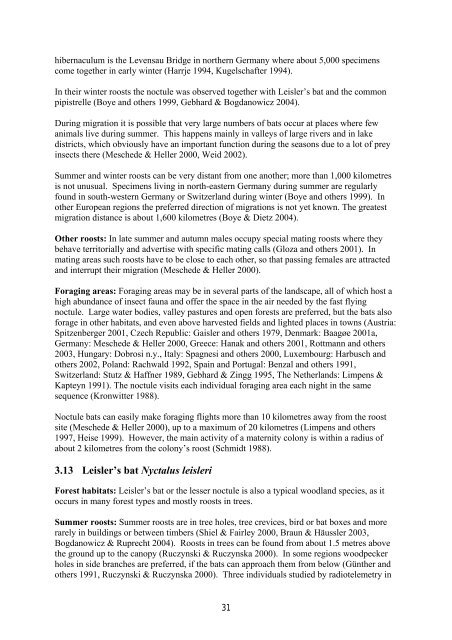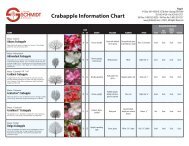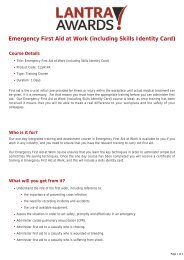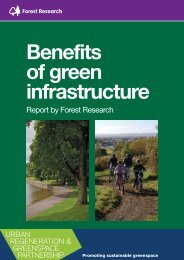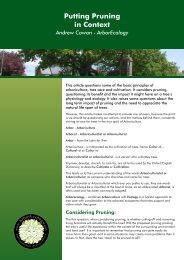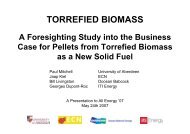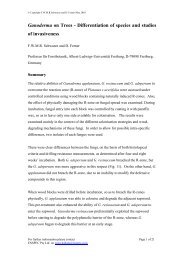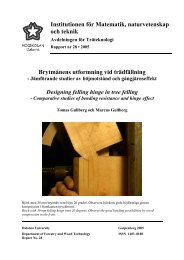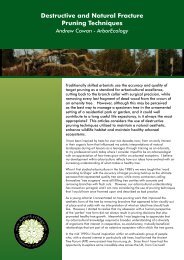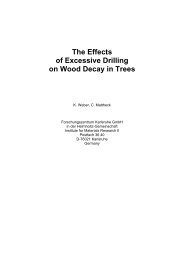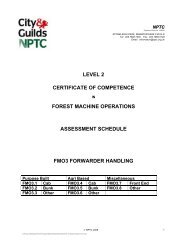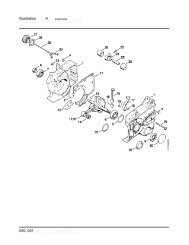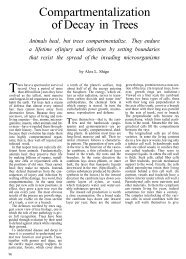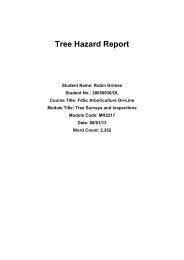working today for nature tomorrow - Justus-Liebig-Universität GieÃen
working today for nature tomorrow - Justus-Liebig-Universität GieÃen
working today for nature tomorrow - Justus-Liebig-Universität GieÃen
- No tags were found...
Create successful ePaper yourself
Turn your PDF publications into a flip-book with our unique Google optimized e-Paper software.
hibernaculum is the Levensau Bridge in northern Germany where about 5,000 specimenscome together in early winter (Harrje 1994, Kugelschafter 1994).In their winter roosts the noctule was observed together with Leisler’s bat and the commonpipistrelle (Boye and others 1999, Gebhard & Bogdanowicz 2004).During migration it is possible that very large numbers of bats occur at places where fewanimals live during summer. This happens mainly in valleys of large rivers and in lakedistricts, which obviously have an important function during the seasons due to a lot of preyinsects there (Meschede & Heller 2000, Weid 2002).Summer and winter roosts can be very distant from one another; more than 1,000 kilometresis not unusual. Specimens living in north-eastern Germany during summer are regularlyfound in south-western Germany or Switzerland during winter (Boye and others 1999). Inother European regions the preferred direction of migrations is not yet known. The greatestmigration distance is about 1,600 kilometres (Boye & Dietz 2004).Other roosts: In late summer and autumn males occupy special mating roosts where theybehave territorially and advertise with specific mating calls (Gloza and others 2001). Inmating areas such roosts have to be close to each other, so that passing females are attractedand interrupt their migration (Meschede & Heller 2000).Foraging areas: Foraging areas may be in several parts of the landscape, all of which host ahigh abundance of insect fauna and offer the space in the air needed by the fast flyingnoctule. Large water bodies, valley pastures and open <strong>for</strong>ests are preferred, but the bats also<strong>for</strong>age in other habitats, and even above harvested fields and lighted places in towns (Austria:Spitzenberger 2001, Czech Republic: Gaisler and others 1979, Denmark: Baagøe 2001a,Germany: Meschede & Heller 2000, Greece: Hanak and others 2001, Rottmann and others2003, Hungary: Dobrosi n.y., Italy: Spagnesi and others 2000, Luxembourg: Harbusch andothers 2002, Poland: Rachwald 1992, Spain and Portugal: Benzal and others 1991,Switzerland: Stutz & Haffner 1989, Gebhard & Zingg 1995, The Netherlands: Limpens &Kapteyn 1991). The noctule visits each individual <strong>for</strong>aging area each night in the samesequence (Kronwitter 1988).Noctule bats can easily make <strong>for</strong>aging flights more than 10 kilometres away from the roostsite (Meschede & Heller 2000), up to a maximum of 20 kilometres (Limpens and others1997, Heise 1999). However, the main activity of a maternity colony is within a radius ofabout 2 kilometres from the colony’s roost (Schmidt 1988).3.13 Leisler’s bat Nyctalus leisleriForest habitats: Leisler’s bat or the lesser noctule is also a typical woodland species, as itoccurs in many <strong>for</strong>est types and mostly roosts in trees.Summer roosts: Summer roosts are in tree holes, tree crevices, bird or bat boxes and morerarely in buildings or between timbers (Shiel & Fairley 2000, Braun & Häussler 2003,Bogdanowicz & Ruprecht 2004). Roosts in trees can be found from about 1.5 metres abovethe ground up to the canopy (Ruczynski & Ruczynska 2000). In some regions woodpeckerholes in side branches are preferred, if the bats can approach them from below (Günther andothers 1991, Ruczynski & Ruczynska 2000). Three individuals studied by radiotelemetry in31


